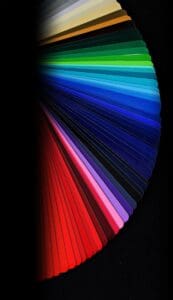1. It is made from pigments that are ground together and held together with a gum binder that’s water-soluble, of course. The pigments used in watercolour paint can be either natural or synthetic.
2. It dries a lot lighter than when it is applied. In other words, the colour you apply to the canvas won’t be the same colour you’ll get once the paint has dried out. The final, dried colour is about two times lighter than the original colour applied to the canvas.
3. It is very safe and practically non-toxic. However, you should still avoid getting it on your hands, just to be on the safe side.
4. It has been used for many millennia – cave paintings done in paleolithic Europe were done in watercolour. It gained a surge of popularity during the Renaissance when it became appreciated is a proper art medium.
5. It can be transparent or opaque. Transparent watercolours let the light into the canvas and reflect it back, creating a sort of glowing effect. Opaque watercolours, on the other hand, don’t let the light in as much and instead make it bounce off the pigment, which creates a sort of dull and weathered effect.
6. It comes in tubes or pans. With tubes, you just squirt the paint out and go from there. Pans are basically square blocks of paint put together in a plastic or metal box. Generally speaking, tube paints are much easier to mix; they’re also cheaper and are better for creating large washes. Most artists prefer to use tube paints.
7. Fugitive watercolours fade very quickly. Most of the watercolour paints available now are non-fugitive, meaning the colour won’t fade as quickly and will therefore last a lot longer.
8. The same colour by different manufacturers may not look the same. If you want to use a particular colour, make sure to buy your paints from a single manufacturer so you get a consistent colour.
9. As it is water-based, watercolour paint can be quite unpredictable. When painting with watercolours, you have to learn how to control the paint. Of course, you could let the paint do its own thing and incorporate this into your painting.
10. Staining refers to how easy it is to remove watercolour paint from a support once it’s been applied or has completely dried. A staining paint is one that’s hard to remove, while a less-staining paint ca easily be wetted and lifted. The make of paint and the make of the support can both affect a paint’s staining.
Source by Joanne Perkins
Disclaimer: The views and opinions expressed in this article are those of the authors and do not necessarily reflect the official policy or position of Irish Artmart.




